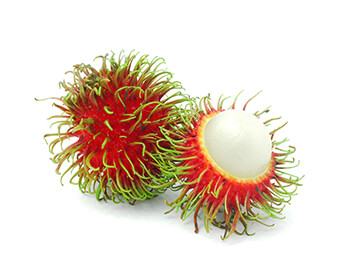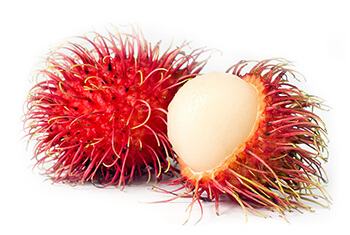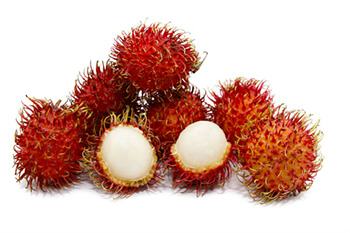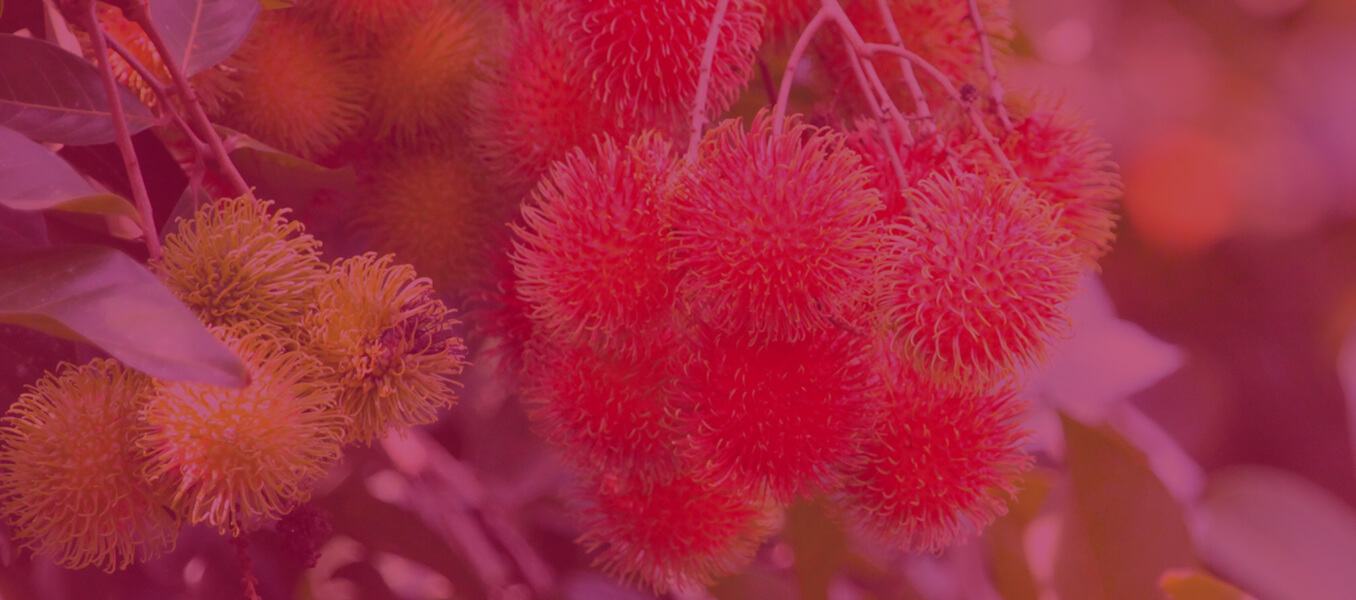Rambutan
Rambutan now grows in tropical climates all over the world. In Vietnam, Rambutan is called Chôm Chôm
(meaning “messy hair”), due to numerous hair-like spikes on the surface of the fruit. The leathery skin is reddish and covered with fleshy pliable spines make this fruit unmistakable.
Rambutan is used for the preparation of smoothies, jellies, jams, ice-creams, sauces, chutneys and soups. Oil extracted from the Rambutan seed can be used as cooking oil and for the manufacture of candles and soap.
Rambutan is rich source of dietary fibers. This fruit contains moderate amount of vitamins C and B3 and minerals such as iron, calcium and copper. Rambutan fruit can be used in treatment of dysentery and diarrhea and prevents cell damage, facilitates synthesis of blood cells and elimination of the waste from the body and increases strength of teeth and bones. Rambutan leaves can be used in treatment of headache, tongue disorders, while root can be used to soothe the fever.
Rambutan is used for the preparation of smoothies, jellies, jams, ice-creams, sauces, chutneys and soups. Oil extracted from the Rambutan seed can be used as cooking oil and for the manufacture of candles and soap.
Rambutan is rich source of dietary fibers. This fruit contains moderate amount of vitamins C and B3 and minerals such as iron, calcium and copper. Rambutan fruit can be used in treatment of dysentery and diarrhea and prevents cell damage, facilitates synthesis of blood cells and elimination of the waste from the body and increases strength of teeth and bones. Rambutan leaves can be used in treatment of headache, tongue disorders, while root can be used to soothe the fever.
Seasonality
Jan
Feb
Mar
Apr
May
Jun
Jul
Aug
Sep
Oct
Nov
Dec
Varieties
RAMBUTAN: THAI

WELL-KNOWN FOR
Oval, ovoid Shape
Brix level: 19-22°
Texture: Thick, dry and firm
Taste: sweet (moderately sweet)
The flesh separates easily from the seed
Brix level: 19-22°
Texture: Thick, dry and firm
Taste: sweet (moderately sweet)
The flesh separates easily from the seed
SIZE
30 – 40 g/pcs
APPEARANCE
Overall deep-red color both in rind and numerous hair-like spines
The hairy fruit, often a dense, long and neon green pliable spines on the outside
White flesh and Thin-woody seed coat
The hairy fruit, often a dense, long and neon green pliable spines on the outside
White flesh and Thin-woody seed coat
RAMBUTAN: JAVA

WELL-KNOWN FOR
Oval, ovoid Shape
Brix level: 14-20°
Texture: Thick, juicy and tough
Taste: fairly sour (subacid)
The flesh clings firmly to the seed, so It’s frequently difficult to separate from the seed
Brix level: 14-20°
Texture: Thick, juicy and tough
Taste: fairly sour (subacid)
The flesh clings firmly to the seed, so It’s frequently difficult to separate from the seed
SIZE
50 – 65 g/pcs
APPEARANCE
Bright red rind with a yellow blush over a small portion of the Rambutan
The hairy fruit, often short and reddish pliable spines on the outside
White flesh and Thin-woody seed coat
The hairy fruit, often short and reddish pliable spines on the outside
White flesh and Thin-woody seed coat
RAMBUTAN: NHAN (LONGAN STYLE)

WELL-KNOWN FOR
Round shape
Brix level: 22 – 24°
Texture: Thick, dry and crisp flesh
Taste: very sweet
Crisp flesh that comes off the seed easily without a few particles of testa clinging to it
Brix level: 22 – 24°
Texture: Thick, dry and crisp flesh
Taste: very sweet
Crisp flesh that comes off the seed easily without a few particles of testa clinging to it
SIZE
20 – 23 g/pcs
APPEARANCE
Pinkish-red rind with a short and sparse spines comparison with two other types of Rambutan
The hairy fruit, often red but sometimes green color
White flesh and Thin-woody seed coat
The hairy fruit, often red but sometimes green color
White flesh and Thin-woody seed coat


